Despite Decline in Reported Crime, Wisconsin’s Prison Population Is Surging
Crowding is impacting the safety at state's aging prisons. Advocates, opponents talk solutions, pitfalls.
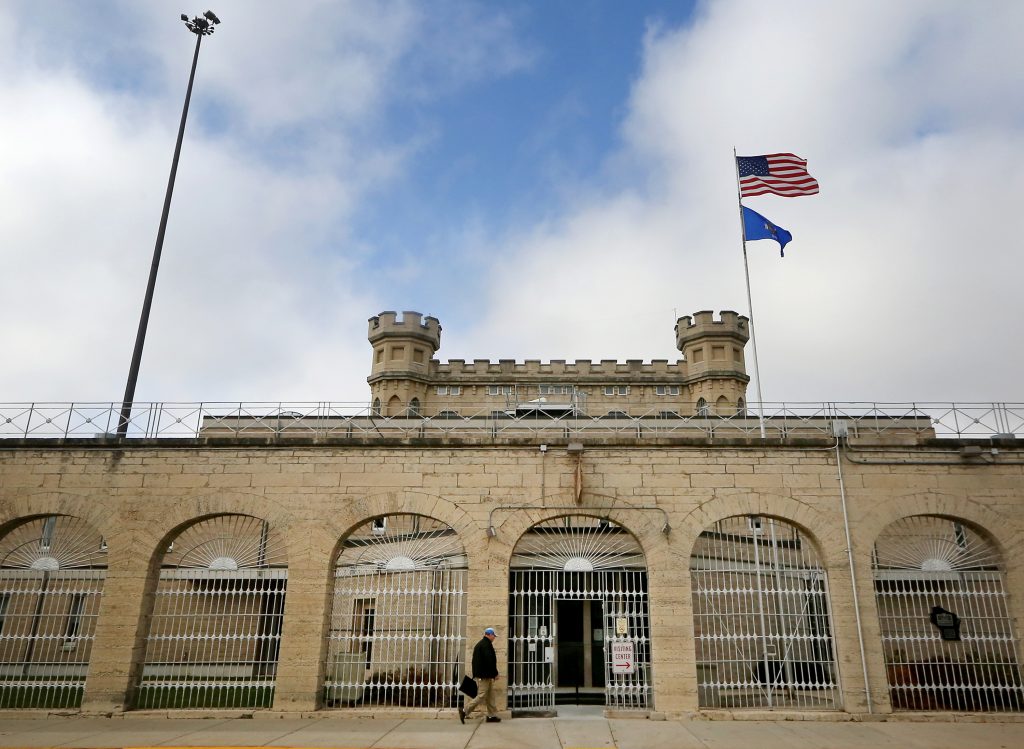
The state Department of Corrections acknowledges staffing shortages contributed to lockdowns at Waupun (above) and Green Bay correctional institutions. Those shortages happened as the state’s prison population hovered high above the system’s built capacity. (John Hart / Wisconsin State Journal)
Wisconsin’s prison population has swelled since a pandemic dip, complicating efforts to address dangerous conditions that were highlighted in June when prosecutors criminally charged nine Waupun Correctional Institution workers, including the former warden, following multiple prisoner deaths.
The state’s adult institutions were locking up nearly 22,800 people as of Aug. 9. That’s more than 5,000 above the design capacity of Wisconsin’s prisons and more than 3,000 above levels three years ago when COVID-19 actions shrunk prisoner ranks to a 20-year low.
The trend does not correspond with an increase in reported crime. Statewide offenses reported to the Wisconsin Department of Justice were up in 2021 but declined in 2022 and 2023.
The prison population increase comes years after Evers vowed to ease crowding in a state that stands out nationally for disproportionately imprisoning Black residents. In a 2018 Democratic gubernatorial debate, Evers — who has spoken of “second chances” and “redemption” — called a goal by activists to cut Wisconsin’s prison population by half “worth accomplishing.”
The latest trend highlights the challenge of doing so a quarter century after Wisconsin enacted one of the country’s most punitive sentencing laws.
The prison problem spans policy and politics. Evers, a Democrat, contends with a Legislature led by Republicans who seek to paint Democrats as soft on crime. Meanwhile, some Democrats say Evers has done too little to wield his own powers to reduce crowding.
“I’m hoping he honors the promises he made on the campaign trail,” said state Rep. Darrin Madison, D-Milwaukee. “Because right now that promise is not being fulfilled the way voters thought.”
Experts note that the governor has limited control over the size of the prison population.
Evers spokesperson Britt Cudaback pointed to the governor’s last three budget proposals — largely rejected by Republican lawmakers — that, she said, sought to “bolster evidence-based and data-driven policies we know have improved community safety and reduced recidivism in other states, and support alternatives to incarceration, including increased investments in treatment and diversion.”
“The single greatest obstacle to implementing real, meaningful justice reform in Wisconsin is Republican control of the Legislature,” Cudaback added. “There’s no question that if Republicans had adopted all or even some of the governor’s justice reform initiatives, Wisconsin would have begun relieving pressure on correctional institutions years ago.”
The Evers administration can address some issues on its own. For example, the governor could parole more “old law” prisoners convicted before sentencing reform or issue more pardons.
Evers has issued the most pardons of any Wisconsin governor — more than 1,200 during his tenure. But that has not affected prison populations. He has limited pardon applicants to those who completed their sentence at least five years ago and have no pending criminal charges.
Separately, the Evers administration can make administrative changes to reduce one major driver of new prison admissions: technical revocations — violations of community supervision rules that can return people to prison even if they haven’t committed new crimes.
The Department of Corrections beginning in 2021, for instance, raised the threshold for revocations in certain circumstances, which corresponded with an initial dip in technical revocations.
No matter who’s responsible, the ballooning prison population comes with a financial cost for Wisconsin taxpayers, a physical and psychological toll for those in the corrections system and — with now six recent deaths of inmates in custody at one prison alone — the potential loss of life.
Advocates: New staff alone won’t improve conditions
The prison population is rising as the Wisconsin Department of Corrections works to reverse a long-ignored hemorrhaging of corrections workers. The department reluctantly acknowledged staff vacancies played a role in recent lockdowns in Waupun and Green Bay Correctional Institution that left prisoners confined to cells without timely medical care.
The former warden at Waupun was among nine state employees charged in connection with the deaths of inmates Donald Maier and Cameron Williams. Maier and Williams were among six Waupun inmates who died from various causes since June 2023; investigators and family members have linked many of those deaths to inhumane conditions and the treatment of inmates by corrections staff.
State leaders can’t substantially improve conditions without decarceration — releasing more inmates and diverting others to programs rather than prisons, justice reform advocates say. The high population requires prisons to need so many guards and medical staff in the first place. Curbing the population, advocates say, is the pathway for closing the troubled Waupun and Green Bay prisons, which were both built in the 19th century.
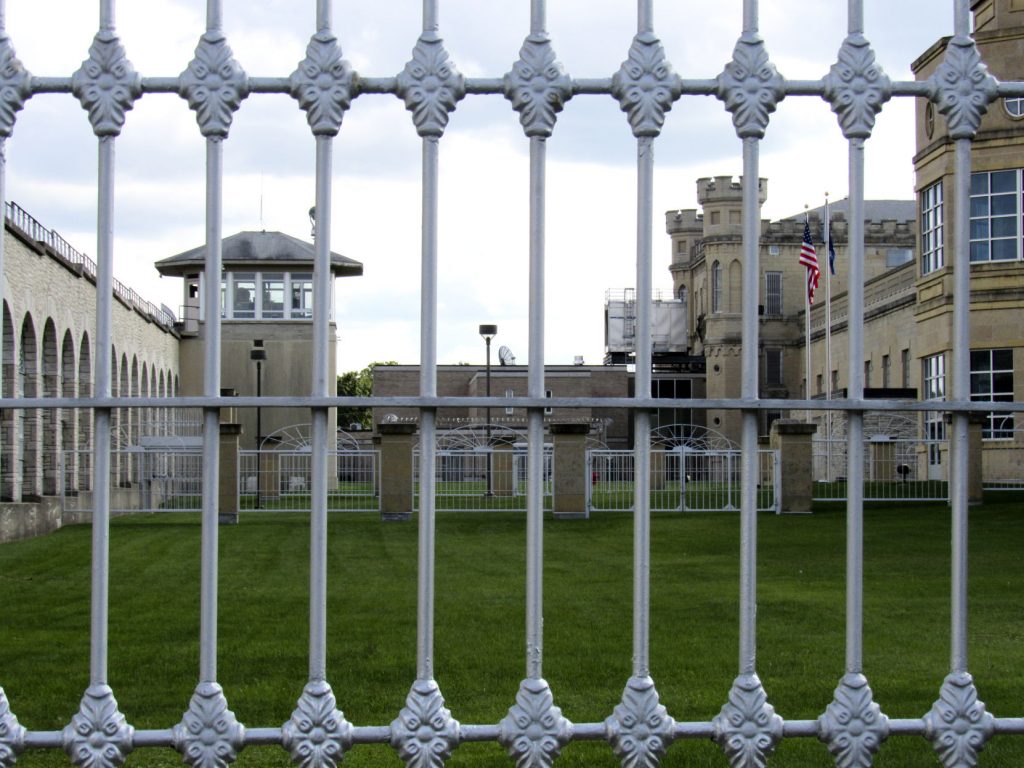
Six inmates at Waupun Correctional Institution have died since June 2023, and family members and investigators have linked those deaths to conditions at the prison. (Barry Adams / Wisconsin State Journal)
“Wisconsin doesn’t have more crime than other states, but we have a bad habit of keeping people incarcerated much longer than necessary,” Beverly Walker and Sherry Reames of WISDOM, a statewide faith-based organization, said in an email.
How state officials tackle prison crowding matters for the welfare of prisoners and corrections officers — and for taxpayers.
State efforts to imprison fewer people are unlikely to yield major savings unless they prompt prison closures — a politically challenging task, said Michael O’Hear, a Marquette University Law School professor and expert on criminal punishment.
“The big driver of the system costs are in the fixed costs of having an institution,” O’Hear said. “The big savings come from getting your prison population down to the point where you can actually start closing institutions.”
Other states — some led by Republicans and some by Democrats — have managed to close prisons by adopting rehabilitation-focused reforms that trimmed thousands from the prison population.
Roots of mass incarceration in Wisconsin
How did Wisconsin prisons fill in the first place?
Aggressive prosecutors and judges in the 1980s and 1990s — seeing retributive justice as a pathway for winning elections — fueled mass incarceration in Wisconsin and nationally, as did toughened drug sentencing laws.
Then the state’s truth-in-sentencing law — signed in 1998 by Gov. Tommy Thompson and passed with bipartisan support — virtually eliminated parole for newly convicted offenders. By then prisons filled up beyond the system’s designed capacity, in some cases requiring doubling up or tripling up in cells.

Wisconsin’s truth-in-sentencing law prevented the state from reducing its prison population even as the war on drugs lost its zeal, says Michael O’Hear, a Marquette University Law School professor and expert on criminal punishment. (Ruthie Hauge / Cap Times)
Some zeal in the war on drugs waned after 2000, with fewer drug arrests statewide, particularly in Milwaukee, O’Hear said. But the sentencing overhaul closed pressure release valves in the prison system; it narrowed release options, preventing a corresponding drop in the prison population.
“The potential dividends of walking back the war on drugs were lost as a result of truth-in-sentencing,” O’Hear added.
Prisoners sentenced prior to truth-in-sentencing — a group known as “old law” inmates — were eligible for release after serving 25% of their time. They received a mandatory release after serving two-thirds of their time. The overhaul changed that, requiring them to serve 100% of their sentences plus post-release “extended supervision” of at least 25% of the original sentence.
Parole remains available only to those sentenced before the law took effect on Dec. 31, 1999.
Rules of extended supervision
Extended supervision requires following at least 18 standard rules, including regularly reporting to a supervision agent and giving blanket consent to be searched. People under supervision learn that violations could include any conduct that conflicts with law or “is not in the best interest of the public welfare or your rehabilitation,” or failing to comply with probation agent-imposed rules that can be modified at any time.
Little is more traumatic than returning to prison following a brief stint of freedom, said Dennis Franklin, who previously served prison time and is now the interim associate director of EXPO, a Wisconsin-based advocacy organization for formerly incarcerated people.
“It’s very depressing when you don’t have a new charge,” he said. “It’s discouraging to get out and then go through the same thing.”
Extended periods of supervision after release from prison do little to improve public safety, according to Cecelia Klingele, a University of Wisconsin-Madison Law School professor of criminal law. The long terms “may interfere with the ability of those on supervision to sustain work, family life and other pro-social connections to their communities,” she wrote in a 2019 study examining 200 revocation cases.
“Fewer, more safety-focused conditions will lead to fewer unnecessary revocations and more consistency in revocation for people whose behavior poses a serious threat to public safety,” she added.
Streamlining the standard supervision rules would require the Legislature to act.
Back to prison for violating supervision rules
Supervision or probation can be revoked in three ways: a new sentence for a new crime; a revocation plus a new sentence; or a technical rules violation without a criminal conviction. Revocations follow a Department of Corrections investigation, supervising agent’s recommendation and administrative law judge’s ruling. They require a lower standard of evidence than in a criminal courtroom. Administrative law judges may accept even hearsay as evidence.
Criminal justice reform advocates often call technical violations “crimeless revocations,” although corrections officials note such violations could include allegations of criminal behavior not yet charged.
Still, advocates highlight examples of seemingly minor behavior that send people back to prison.
Joseph Crowley, a Kenosha man who was convicted of sexual assault in 1999 before truth-in-sentencing kicked in, said he was sent back to prison in 2011 for technical violations that included wearing a green hat on St. Patrick’s Day and using a credit card to buy a PlayStation 3 and the laptop he was using at Gateway Technical College.
Crowley said one of his probation rules barred him from altering his appearance and another allowed him to use debit cards but not credit.
“Their reasoning was that if you got locked up, you wouldn’t have any way of continuing the credit payments,” Crowley recalled.
He said he served nine additional years in prison because of the violations. Crowley was assaulted at Dodge Correctional Institution before being paroled in 2021 under the old law, he said.

Joseph Crowley, of Kenosha, says he was sent back to prison in 2011 for using a credit card and altering his appearance by wearing a St. Patrick’s Day hat in violation of probation rules. He served nine more years as a result. (Ruthie Hauge / Cap Times)
Klingele’s research suggests most technical revocation stories look different than Crowley’s.
Her 2019 study found numerous examples of revocations stemming from multiple technical violations. The most frequent serious allegations were: failing to complete the terms of an alternative program; alleged assaultive crimes; and absconding, which included continually failing to attend meetings or check in with agents.
Substance abuse problems contributed to technical revocations in an “overwhelming majority” of cases, Klingele wrote, because “agents have few options to impose meaningful sanctions other than imprisonment.”
That’s why researchers say expanding substance abuse treatment could help reduce revocations and recidivism.
Beth Hardtke, a corrections department spokesperson, noted that Evers’ most recent budget proposal sought to invest millions of additional dollars in Alternatives to Revocation, the department’s Earned Release Program, other types of substance use disorder treatment and a program that helps formerly incarcerated people experiencing mental illnesses safely transition into communities. The Legislature rejected or reduced funding for those proposals.
The department did, however, make changes to increase enrollment in the Earned Release Program, which offers pathways for early release to eligible prisoners with substance abuse issues who complete treatment and training, Hardtke noted. That included expanding access to prisoners in medium custody.
Effort to reduce technical revocations
Technical revocations accounted for more than 13,800 prison admissions from the beginning of Evers’ first term in January 2019 through last May, according to Department of Corrections data. That’s about 34% of all admissions during the period.
“If we really want to reduce the prison population responsibly, that is the way to do it,” David Liners, executive director of WISDOM, said about curbing technical revocations.
“The governor is not handling it. He’s basically maintained the status quo.”
The Department of Corrections has sought to reduce technical revocations. Beginning in 2021 it raised the threshold for revocations in a number of circumstances. That included requiring all treatment options be exhausted before returning someone to prison for violations related only to substance abuse — changes widely unpopular with parole officers who must implement them, according to a legislative audit.
The changes corresponded with an initial drop in technical revocations — to 27% of prison admissions in 2022 from 34% a year earlier.
The department previously cited the changes as one of several factors in the prison population’s plunge to a two-decade low in mid-2021. A spring 2020 pause on admissions to slow COVID-19 largely shaped that decline, as did court backlogs that left defendants waiting for their cases to be processed — a trend seen nationally.
“With some exceptions, the statutory framework courts and the department operate under largely remains the same” since the pandemic, Hardtke said in an email. “This underscores that, without comprehensive criminal justice reform, including strong investments in substance use and mental health treatment, Wisconsin will not be able to meaningfully and safely reduce our prison population.”
As the broader prison population rebounds, so have technical revocations, which increased to about 30% of total admissions in 2023 and 40% during the first five months of this year.
Hardtke cautioned that the department may later link some of the recent technical revocations to new criminal sentences when more information is available, which would retroactively affect the admissions data.
Lessons from the pandemic and from other states
Incarceration rebounds in Wisconsin and other states reflect having moved past the pandemic, which saw disrupted court operations and intense concerns about COVID-19’s spreading, said O’Hear, the Marquette law professor.
State Sen. Kelda Roys, a Madison Democrat who sits on the Senate’s Committee on Judiciary and Public Safety, said the population decline during the pandemic public health emergency illustrates that Wisconsin can safely decarcerate without a clear impact on public safety.
But more action is needed to reduce revocations and increase paroles, Roys said.
“We did it when it was necessary to save people’s lives. We were able to bring the prison population down safely and we can do that again,” she said. “Crimeless revocation is making us less safe.”
Her Republican colleagues see things differently.
Sen. Eric Wimberger, R-Green Bay, called rehabilitation an important component for those wanting to change after hitting rock bottom. But he claimed that many don’t seek redemption.
“The bulk of prisoners are not inclined to change, and they are just doing their time looking for opportunities to get out as soon as possible by completing programs,” said Wimberger, who also sits on the judiciary and public safety committee. “Gov. Evers, with hubris, seems convinced that society is responsible for the crimes against it, and he can somehow sit criminals down for a good talking-to in a program to have an epiphany about doing the right thing.”
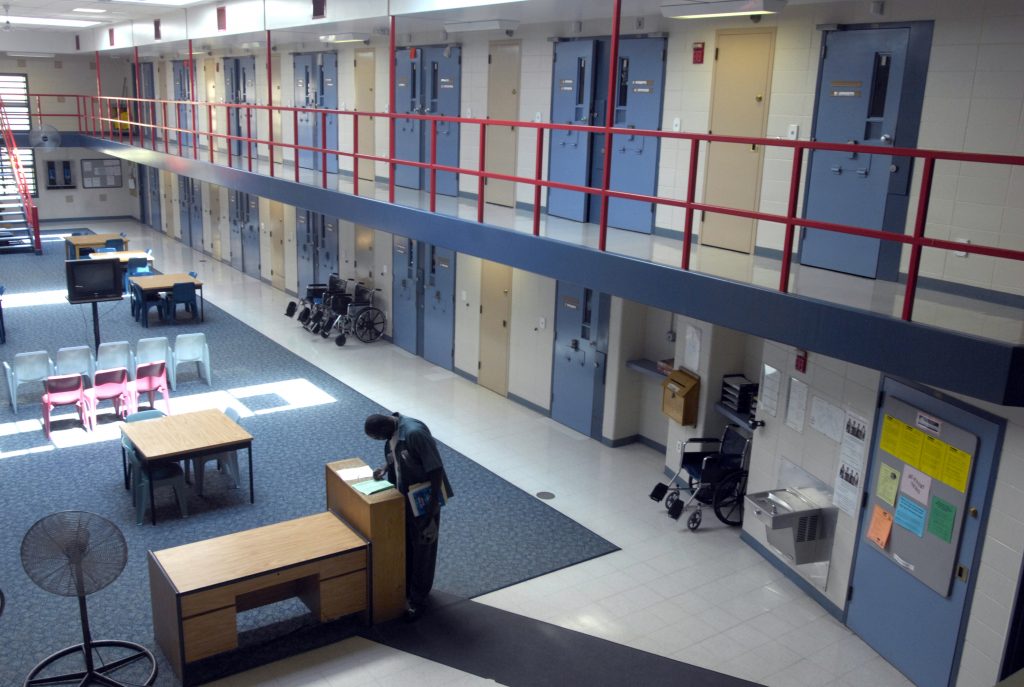
Housing units are shown at Racine Correctional Institution. Wisconsin has not followed the lead of other states like New York and Texas, which have cut their inmate numbers and closed prisons with a variety of new policies. (Mark Hertzberg / Journal Times)
Advocates for prioritizing rehabilitation say Wisconsin should follow the lead of other states that have dramatically reduced their prison populations without jeopardizing safety.
New York, for instance, has cut its population in half since 2008 and closed some prisons. That’s due to various factors, including fewer admissions and releases to parole supervision, early releases of certain people during the pandemic and reforms to drug sentencing laws. The state in 2021 removed incarceration for most minor technical parole violations.
Republican-led Texas has also closed several prisons in recent decades as a result of bipartisan criminal justice reforms that reduced the need for incarceration. That included a greater focus on substance abuse treatment and diversion.
The Minnesota Legislature’s criminal justice overhaul in 2023 included provisions to curb revocations.
California, meanwhile, has carried out the largest court-ordered prisoner reduction in history by shifting responsibility for certain lower-level offenders from prisons to jails — encouraging more cost-effective local alternatives to incarceration.
“We don’t have to have 20,000 people in prison,” O’Hear said. “The ability of many states to experience reductions in their prison population — by whatever means — without necessarily having big public safety problems resulting, there’s a lesson to be drawn from that.”
This story was co-produced by the Cap Times and Wisconsin Watch. Mario Koran of Wisconsin Watch contributed reporting. Nicholas Garton joined the Cap Times in 2019 after three years as a features writer for Madison365. Jim Malewitz joined Wisconsin Watch in 2019 as investigations editor and is now deputy managing editor.
If you think stories like this are important, become a member of Urban Milwaukee and help support real, independent journalism. Plus you get some cool added benefits.


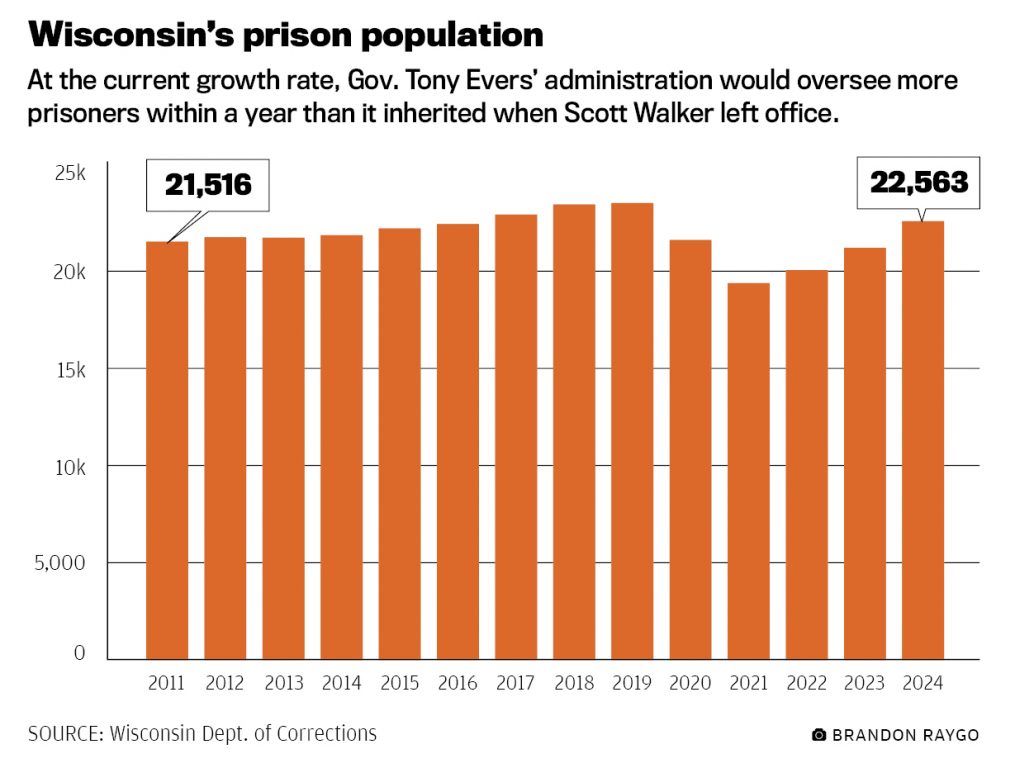
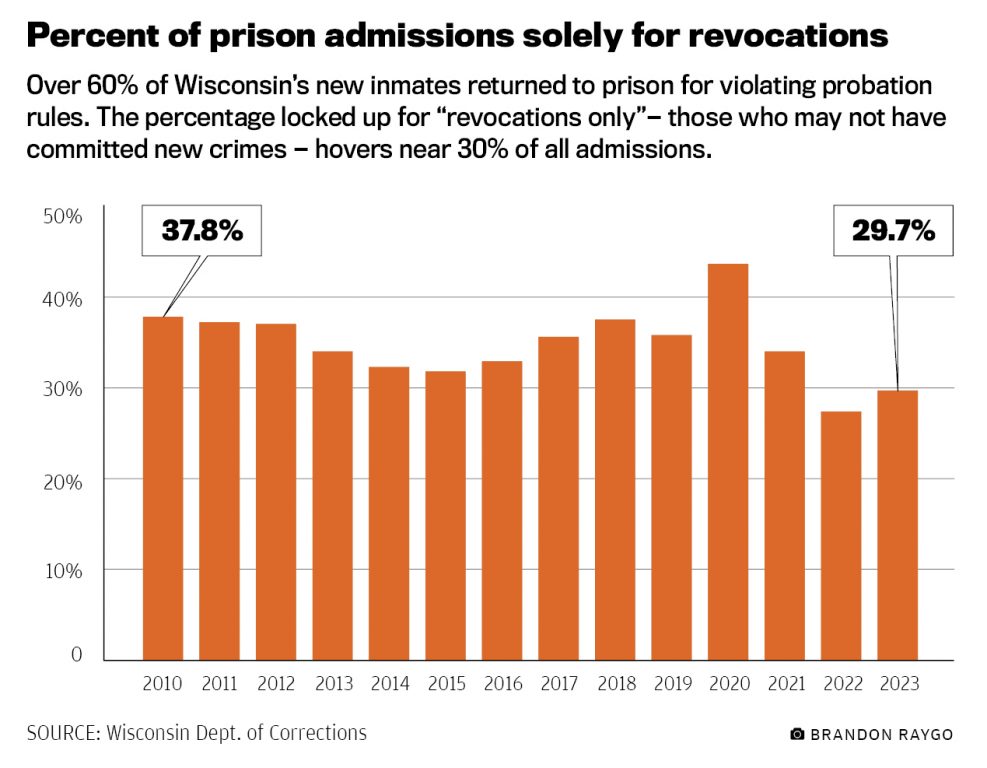




















Minnesota is similar to us in many ways, including crime. They incarcerate a third less people than we do. Let’s learn from them.